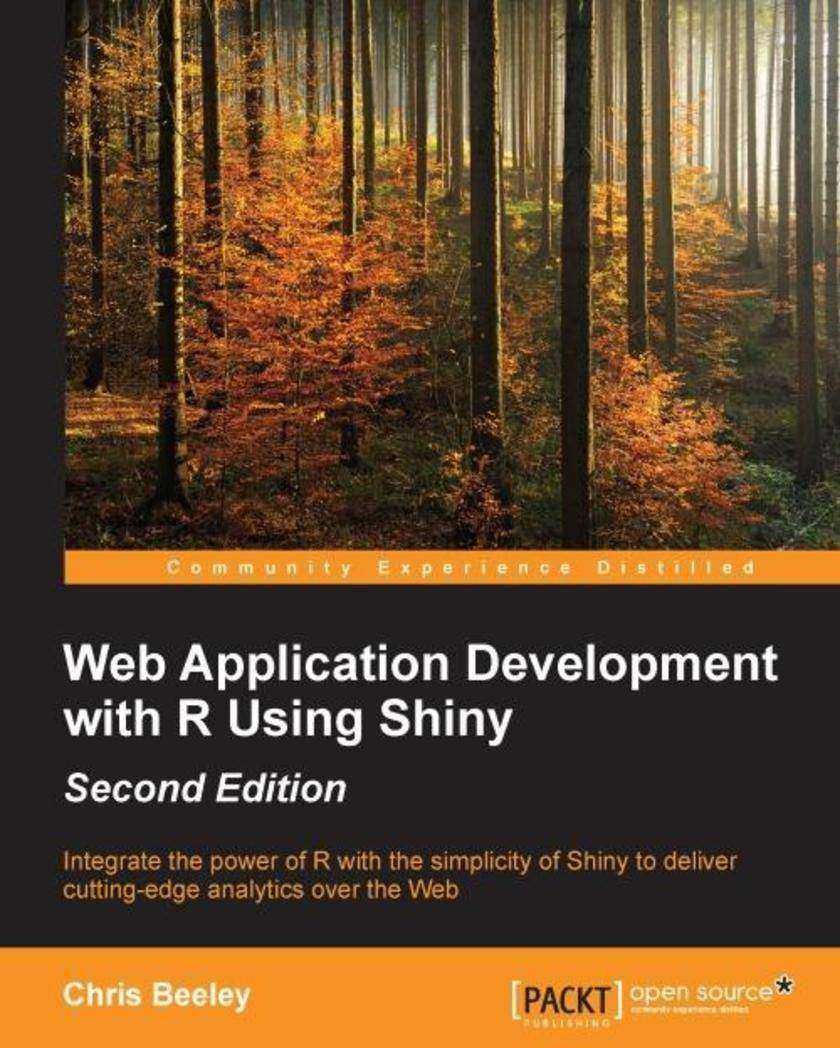
Web Application Development with R Using Shiny - Second Edition
¥71.93
Integrate the power of R with the simplicity of Shiny to deliver cutting-edge analytics over the WebAbout This BookUse Shiny's built-in functions to produce engaging user interfaces, and integrate them into your own web pagesImplement powerful user-contributed packages to access graphics from the web, make your own dashboards, use interactive maps, and moreExtend Shiny using JavaScript and jQuery with minimal coding using this handy, step-by-step guideWho This Book Is ForThis book is for anybody who wants to produce interactive data summaries over the web, whether you want to share them with a few colleagues or the whole world. No previous experience with R, Shiny, HTML, or CSS is required to begin using this book, although you should possess some previous experience with programming in a different language.What You Will LearnBuild interactive applications using Shiny's built-in widgetsUse the built-in layout functions in Shiny to produce user-friendly applicationsIntegrate Shiny applications with web pages and customize them using HTML and CSSHarness the power of JavaScript and jQuery to customize your applicationsEngage your users and build better analytics using interactive plotsDebug your applications using Shiny's built-in functionsDeliver simple and powerful analytics across your organization using Shiny dashboardsShare your applications with colleagues or over the Internet using cloud services or your own serverIn DetailR is a highly flexible and powerful tool for analyzing and visualizing data. Most of the applications built using various libraries with R are desktop-based. But what if you want to go on the webHere comes Shiny to your rescue!Shiny allows you to create interactive web applications using the excellent analytical and graphical capabilities of R. This book will guide you through basic data management and analysis with R through your first Shiny application, and then show you how to integrate Shiny applications with your own web pages. Finally, you will learn how to finely control the inputs and outputs of your application, along with using other packages to build state-of-the-art applications, including dashboards.Style and approachLearn by doing! Each chapter includes code and examples to use and adapt for your own applications. As the chapters progress, the code and examples are built upon until you have all the materials required to build a large, complex, real-world analytics application.
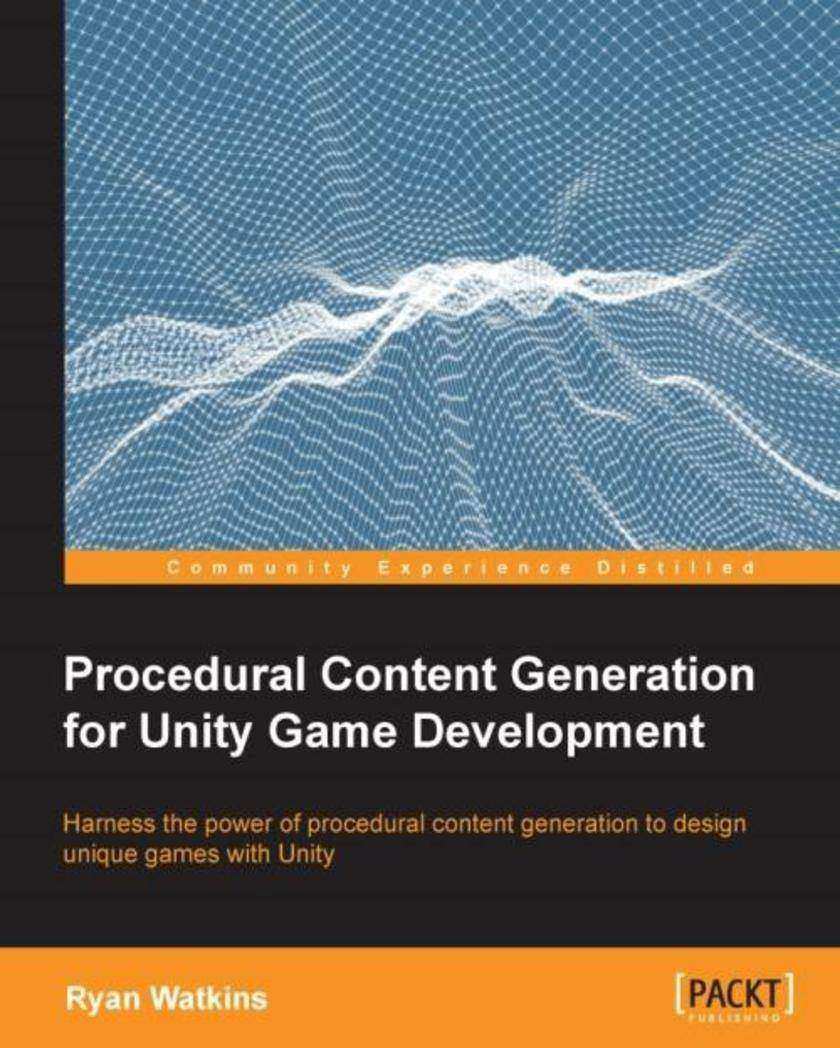
Procedural Content Generation for Unity Game Development
¥90.46
Harness the power of procedural content generation to design unique games with UnityAbout This BookLearn the basics of PCG developmentDevelop a 2D game from start to finishExplore all the different ways PCG can be applied in gamesWho This Book Is ForThis book is for Unity game developers, especially those who work on indie games. You should be familiar with Unity and C# *ing but you'll be able to jump in and start learning PCG straightaway.What You Will LearnUnderstand the theory of Procedural Content GenerationLearn the uses of Pseudo Random NumbersCreate reusable algorithm designs for PCGEvaluate the data structures for PCGDevelop smaller games with larger amounts of contentGenerate content instead of spending time designing every minute detailLearn when and how to add PCG to your gameLearn the fundamental techniques of PCGIn DetailProcedural Content Generation is a process by which game content is developed using computer algorithms, rather than through the manual efforts of game developers. This book teaches readers how to develop algorithms for procedural generation that they can use in their own games. These concepts are put into practice using C# and Unity is used as the game development engine.This book provides the fundamentals of learning and continued learning using PCG. You'll discover the theory of PCG and the mighty Pseudo Random Number Generator. Random numbers such as die rolls and card drafting provide the chance factor that makes games fun and supplies spontaneity. This book also takes you through the full development of a 2D game.Starting with level generation, you'll learn how PCG can make the game environment for you. You'll move into item generation and learn the different techniques to procedurally create game items. Thereafter, you'll be guided through the more abstract PCG areas such as scaling difficulty to the player and even generating music! The book helps you set up systems within your games where algorithms create computationally generated levels, art assets, quests, stories, characters, and weapons; these can substantially reduce the burden of manually creating every aspect of the game.Finally, you'll get to try out your new PCG skills on 3D terrain generation.Style and approachAn easy-to-follow, project-based guide that will let you build a complete game by the end of the book using PCG.
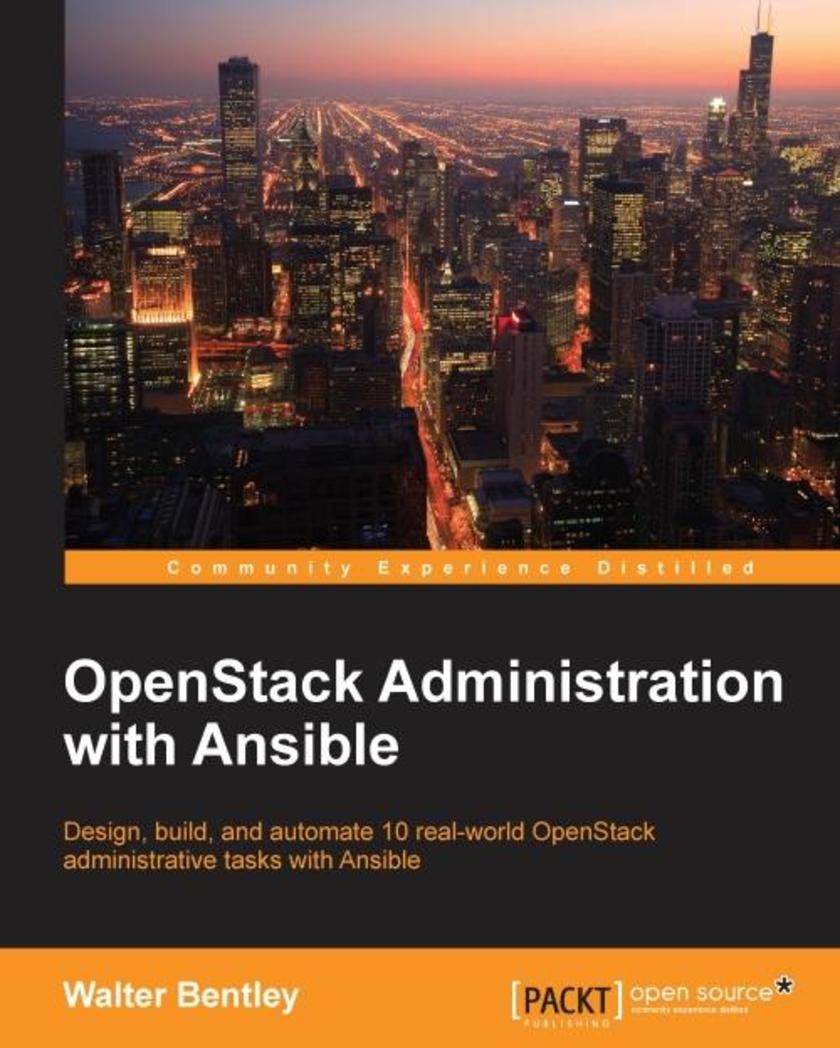
OpenStack Administration with Ansible
¥63.21
Design, build, and automate 10 real-world OpenStack administrative tasks with AnsibleAbout This BookAutomate real-world OpenStack cloud operator administrative tasksConstruct a collection of automation code to save time on managing your OpenStack cloudUse this step-by-step tutorial to automate such tasks with AnsibleWho This Book Is ForIf you are an OpenStack-based cloud operator and/or infrastructure administrator and are interested in automating administrative functions, then this book is exactly what you are looking for. Having a functioning OpenStack environment is helpful, but most certainly not necessary.What You Will LearnEfficiently execute OpenStack administrative tasksFamiliarize yourself with how Ansible works and assess the defined best practicesCreate Ansible playbooks and rolesAutomate tasks to customize your OpenStack cloudReview OpenStack automation considerations when automating administrative tasksExamine and automate advanced OpenStack tasks and designated use casesGet a high-level overview of OpenStack and the current production-ready projectsDeep dive into OpenStack CLI tools and find out how to use themIn DetailMost organizations are seeking methods to improve business agility because they have realized just having a cloud is not enough. Being able to improve application deployments, reduce infrastructure downtime, and eliminate daily manual tasks can only be accomplished through some sort of automation.Packed with real-world OpenStack administrative tasks, this book will walk you through working examples and explain how these tasks can be automated using one of the most popular open source automation tools—Ansible.We will start with a brief overview of OpenStack and Ansible and highlight some best practices. Each chapter will provide an introduction to handling various Cloud Operator administration tasks such as creating multiple users/tenants, setting up Multi-Tenant Isolation, customizing your clouds quotas, taking instance snapshots, evacuating compute hosts for maintenance, and running cloud health checks, and a step-by-step tutorial on how to automate these tasks with Ansible.Style and approachThis easy-to-follow reference guide is packed with examples of real-world OpenStack administration tasks; each task is explained in detail and then subsequently turned into automation code.
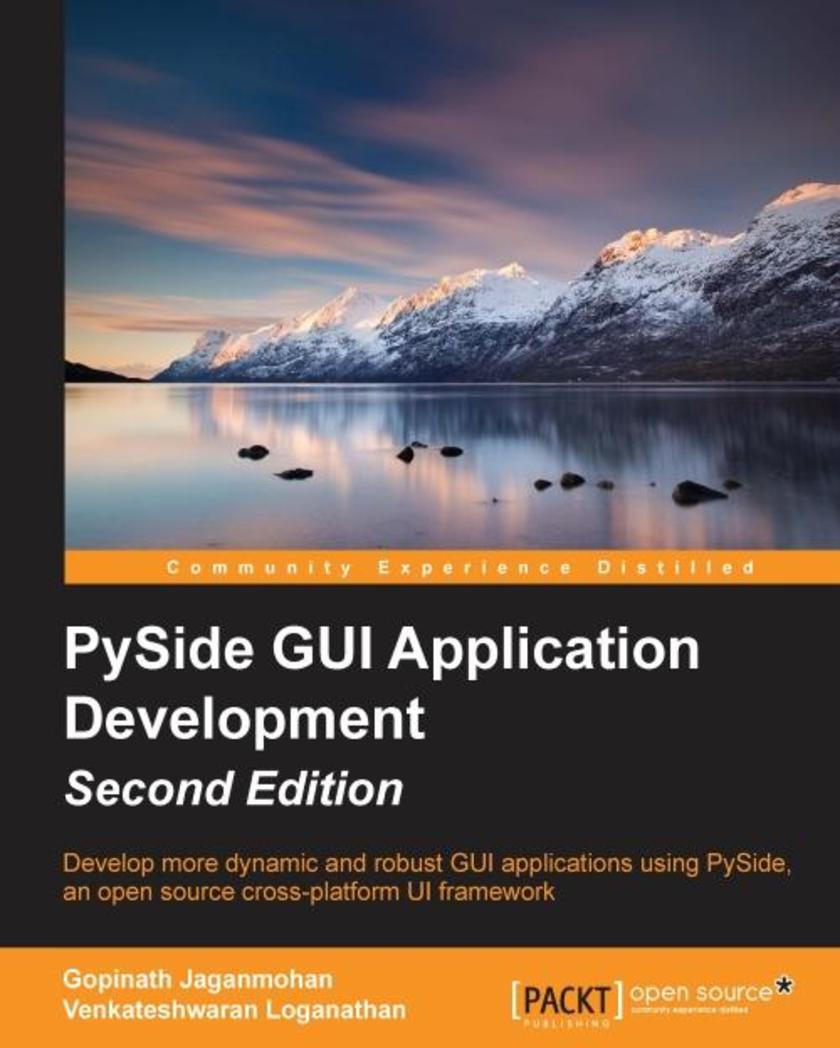
PySide GUI Application Development - Second Edition
¥54.49
Develop more dynamic and robust GUI applications using PySide, an open source cross-platform UI frameworkAbout This BookDesigned for beginners to help you get started with GUI application developmentDevelop your own applications by creating customized widgets and dialogsWritten in a simple and elegant structure so you easily understand how to program various GUI componentsWho This Book Is ForThis book is written for Python programmers who want to learn about GUI programming. It is also suitable for those who are new to Python but are familiar with object-oriented programming.What You Will LearnProgram GUI applications in an easy and efficient wayDownload and install PySide, a cross-platform GUI development toolkit for PythonCreate menus, toolbars, status bars, and child windowsDevelop a text editor application on your ownConnect your GUI to a database and manage itExecute SQL queries by handling databasesIn DetailElegantly-built GUI applications are always a massive hit among users. PySide is an open source software project that provides Python bindings for the Qt cross-platform UI framework. Combining the power of Qt and Python, PySide provides easy access to the Qt framework for Python developers and also acts as an excellent rapid application development platform.This book will take you through everything you need to know to develop UI applications. You will learn about installing and building PySide in various major operating systems as well as the basics of GUI programming. The book will then move on to discuss event management, signals and slots, and the widgets and dialogs available with PySide. Database interaction and manipulation is also covered.By the end of this book, you will be able to program GUI applications efficiently and master how to develop your own applications and how to run them across platforms.Style and approachThis is an accessible and practical guide to developing GUIs for Python applications.
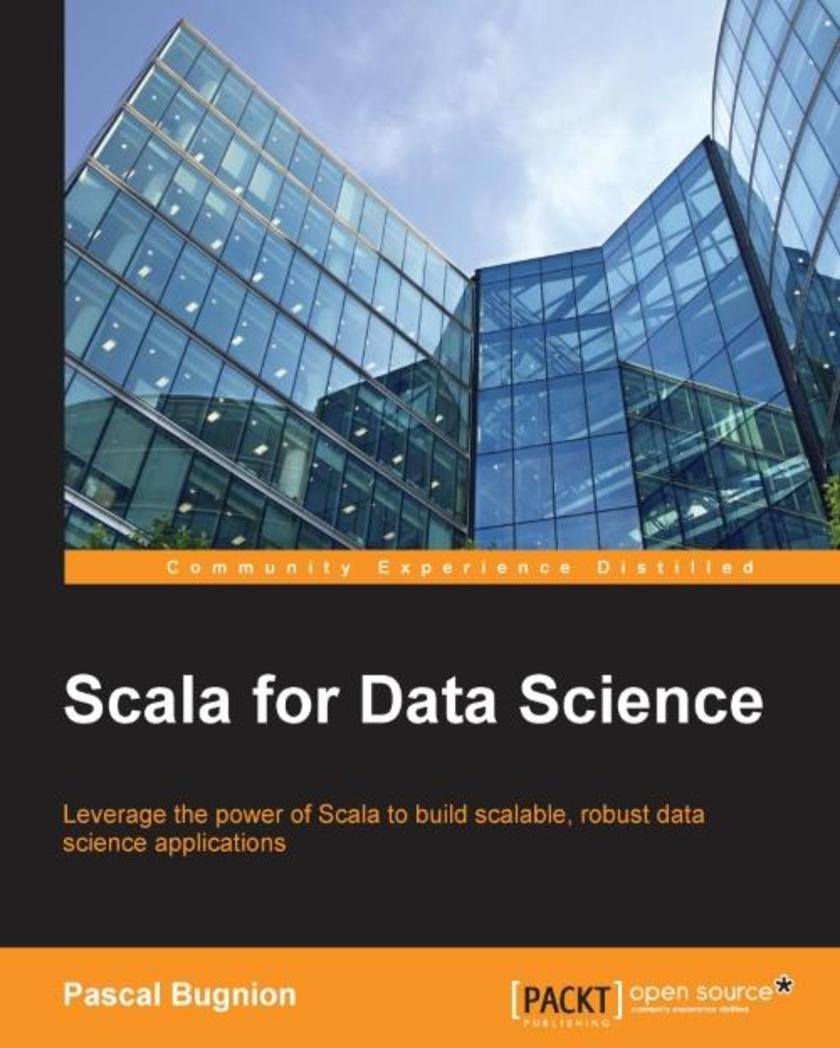
Scala for Data Science
¥99.18
Leverage the power of Scala with different tools to build scalable, robust data science applicationsAbout This BookA complete guide for scalable data science solutions, from data ingestion to data visualizationDeploy horizontally scalable data processing pipelines and take advantage of web frameworks to build engaging visualizationsBuild functional, type-safe routines to interact with relational and NoSQL databases with the help of tutorials and examples providedWho This Book Is ForIf you are a Scala developer or data scientist, or if you want to enter the field of data science, then this book will give you all the tools you need to implement data science solutions.What You Will LearnTransform and filter tabular data to extract features for machine learningImplement your own algorithms or take advantage of MLLib’s extensive suite of models to build distributed machine learning pipelinesRead, transform, and write data to both SQL and NoSQL databases in a functional mannerWrite robust routines to query web APIsRead data from web APIs such as the GitHub or Twitter APIUse Scala to interact with MongoDB, which offers high performance and helps to store large data sets with uncertain query requirementsCreate Scala web applications that couple with JavaScript libraries such as D3 to create compelling interactive visualizationsDeploy scalable parallel applications using Apache Spark, loading data from HDFS or HiveIn DetailScala is a multi-paradigm programming language (it supports both object-oriented and functional programming) and *ing language used to build applications for the JVM. Languages such as R, Python, Java, and so on are mostly used for data science. It is particularly good at analyzing large sets of data without any significant impact on performance and thus Scala is being adopted by many developers and data scientists. Data scientists might be aware that building applications that are truly scalable is hard. Scala, with its powerful functional libraries for interacting with databases and building scalable frameworks will give you the tools to construct robust data pipelines.This book will introduce you to the libraries for ingesting, storing, manipulating, processing, and visualizing data in Scala.Packed with real-world examples and interesting data sets, this book will teach you to ingest data from flat files and web APIs and store it in a SQL or NoSQL database. It will show you how to design scalable architectures to process and modelling your data, starting from simple concurrency constructs such as parallel collections and futures, through to actor systems and Apache Spark. As well as Scala’s emphasis on functional structures and immutability, you will learn how to use the right parallel construct for the job at hand, minimizing development time without compromising scalability. Finally, you will learn how to build beautiful interactive visualizations using web frameworks.This book gives tutorials on some of the most common Scala libraries for data science, allowing you to quickly get up to speed with building data science and data engineering solutions.Style and approachA tutorial with complete examples, this book will give you the tools to start building useful data engineering and data science solutions straightaway
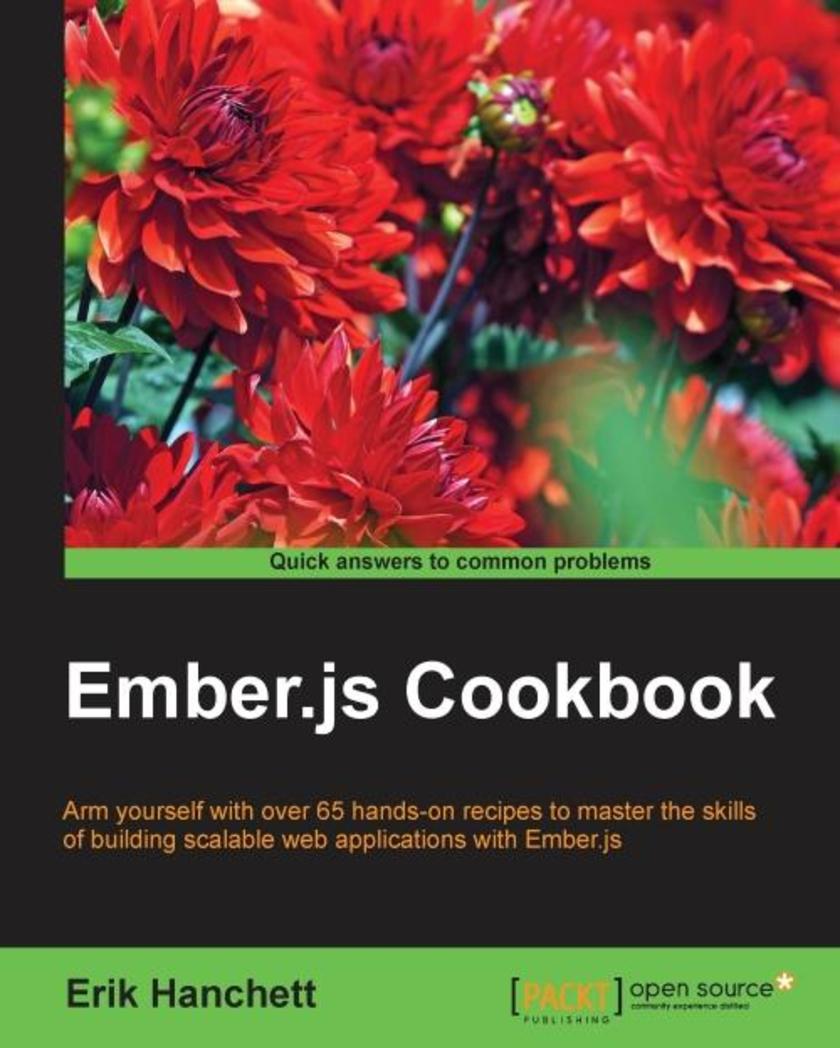
Ember.js Cookbook
¥90.46
Arm yourself with over 65 hands-on recipes to master the skills of building scalable web applications with Ember.jsAbout This BookThis book is your one-stop solution to the key features of Ember.js. Become skilled in the art of building web-apps in a fraction of the code you'd write in other frameworks.Build JavaScript apps that don't break the web! Our 100 recipes will make this a cakewalk for you!This books makes learning Ember.js easy by breaking down each topic into simple-to-understand recipesWho This Book Is ForAnyone who wants to explore Ember.js and wishes to get hands on making sophisticated web apps with less coding will find this book handy. Prior experience in Coding and familiarity with JavaScript is recommended. If you’ve heard of Ember.js or are just curious on how a single-page application framework works, then this book is for you.What You Will LearnSkip the boilerplate code with Ember CLI generatorsCreate a component with actions and eventsSet up a model with Ember Data using fixture dataCreate several different types of test cases and run themManage and set up user authentication using Ember Simple AuthAdd animated transitions to your app with Liquid FireSet up a service and initializer with dependency injectionCreate a working chat applicationSet up an Ember Service and initializer with dependency injectionCreate a working chat applicationIn DetailEmber.js is an open source JavaScript framework that will make you more productive. It uses common idioms and practices, making it simple to create amazing single-page applications. It also lets you create code in a modular way using the latest JavaScript features. Not only that, it has a great set of APIs to get any task done. The Ember.js community is welcoming newcomers and is ready to help you when needed.This book provides in-depth explanations on how to use the Ember.js framework to take you from beginner to expert. You’ll start with some basic topics and by the end of the book, you’ll know everything you need to know to build a fully operational Ember application.We’ll begin by explaining key points on how to use the Ember.js framework and the associated tools. You’ll learn how to effectively use Ember CLI and how to create and deploy your application. We’ll take a close look at the Ember object model and templates by examining bindings and observers. We’ll then move onto Ember components, models, and Ember Data. We’ll show you examples on how to connect to RESTful databases. Next we’ll get to grips with testing with integration and acceptance tests using QUnit. We will conclude by covering authentication, services, and Ember add-ons. We’ll explore advanced topics such as services and initializers, and how to use them together to build real-time applications.Style and approachEach recipe in this book will make it that much easier to understand Ember.js. Recipe after recipe, you will learn the concepts of Ember.js by following the simple step-by-step processes
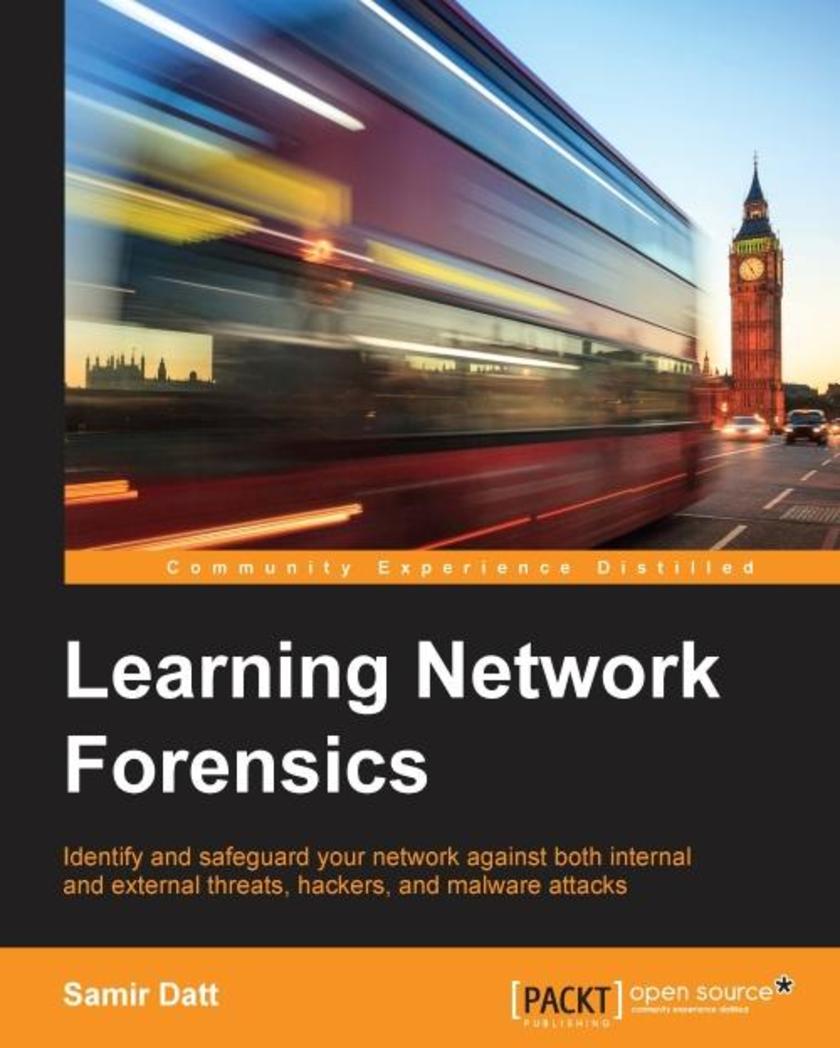
Learning Network Forensics
¥90.46
Identify and safeguard your network against both internal and external threats, hackers, and malware attacksAbout This BookLay your hands on physical and virtual evidence to understand the sort of crime committed by capturing and analyzing network trafficConnect the dots by understanding web proxies, firewalls, and routers to close in on your suspectA hands-on guide to help you solve your case with malware forensic methods and network behaviorsWho This Book Is ForIf you are a network administrator, system administrator, information security, or forensics professional and wish to learn network forensic to track the intrusions through network-based evidence, then this book is for you. Basic knowledge of Linux and networking concepts is expected.What You Will LearnUnderstand Internetworking, sources of network-based evidence and other basic technical fundamentals, including the tools that will be used throughout the bookAcquire evidence using traffic acquisition software and know how to manage and handle the evidencePerform packet analysis by capturing and collecting data, along with content analysisLocate wireless devices, as well as capturing and analyzing wireless traffic data packetsImplement protocol analysis and content matching; acquire evidence from NIDS/NIPSAct upon the data and evidence gathered by being able to connect the dots and draw links between various eventsApply logging and interfaces, along with analyzing web proxies and understanding encrypted web trafficUse IOCs (Indicators of Compromise) and build real-world forensic solutions, dealing with malwareIn DetailWe live in a highly networked world. Every digital device—phone, tablet, or computer is connected to each other, in one way or another. In this new age of connected networks, there is network crime. Network forensics is the brave new frontier of digital investigation and information security professionals to extend their abilities to catch miscreants on the network.The book starts with an introduction to the world of network forensics and investigations. You will begin by getting an understanding of how to gather both physical and virtual evidence, intercepting and analyzing network data, wireless data packets, investigating intrusions, and so on. You will further explore the technology, tools, and investigating methods using malware forensics, network tunneling, and behaviors. By the end of the book, you will gain a complete understanding of how to successfully close a case.Style and approachAn easy-to-follow book filled with real-world case studies and applications. Each topic is explained along with all the practical tools and software needed, allowing the reader to use a completely hands-on approach.
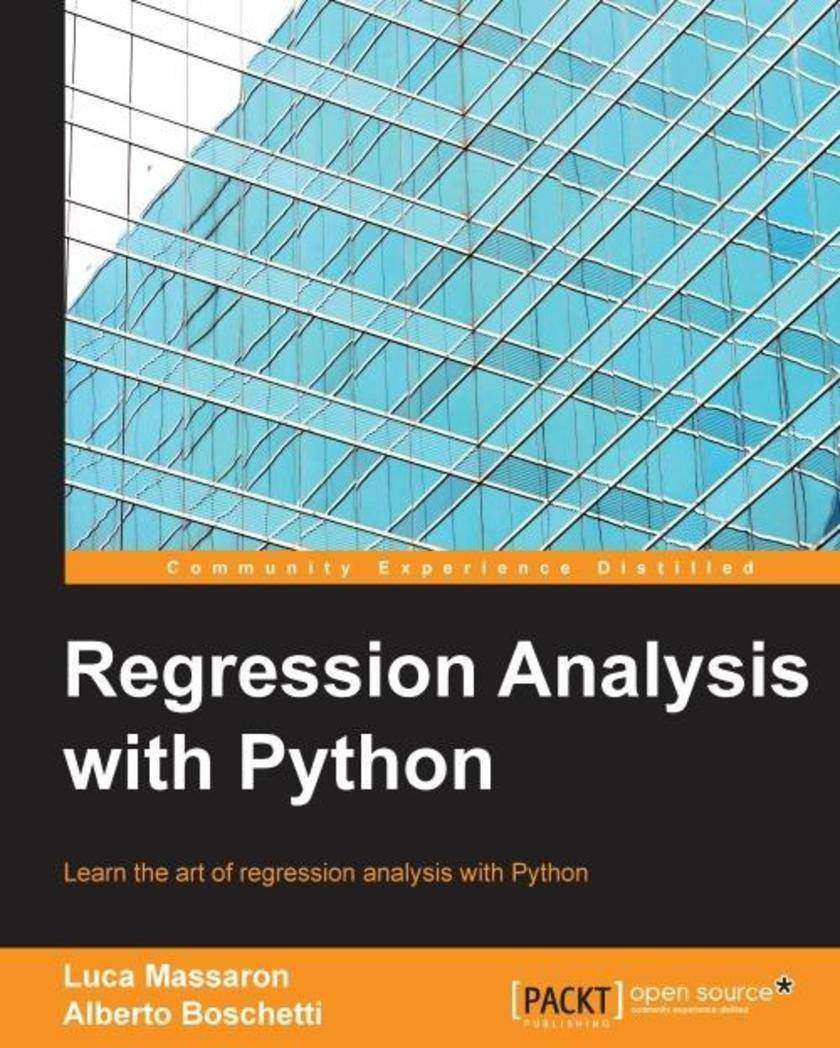
Regression Analysis with Python
¥80.65
Learn the art of regression analysis with PythonAbout This BookBecome competent at implementing regression analysis in PythonSolve some of the complex data science problems related to predicting outcomesGet to grips with various types of regression for effective data analysisWho This Book Is ForThe book targets Python developers, with a basic understanding of data science, statistics, and math, who want to learn how to do regression analysis on a dataset. It is beneficial if you have some knowledge of statistics and data science.What You Will LearnFormat a dataset for regression and evaluate its performanceApply multiple linear regression to real-world problemsLearn to classify training pointsCreate an observation matrix, using different techniques of data analysis and cleaningApply several techniques to decrease (and eventually fix) any overfitting problemLearn to scale linear models to a big dataset and deal with incremental dataIn DetailRegression is the process of learning relationships between inputs and continuous outputs from example data, which enables predictions for novel inputs. There are many kinds of regression algorithms, and the aim of this book is to explain which is the right one to use for each set of problems and how to prepare real-world data for it. With this book you will learn to define a simple regression problem and evaluate its performance. The book will help you understand how to properly parse a dataset, clean it, and create an output matrix optimally built for regression. You will begin with a simple regression algorithm to solve some data science problems and then progress to more complex algorithms. The book will enable you to use regression models to predict outcomes and take critical business decisions. Through the book, you will gain knowledge to use Python for building fast better linear models and to apply the results in Python or in any computer language you prefer.Style and approach This is a practical tutorial-based book. You will be given an example problem and then supplied with the relevant code and how to walk through it. The details are provided in a step by step manner, followed by a thorough explanation of the math underlying the solution. This approach will help you leverage your own data using the same techniques.
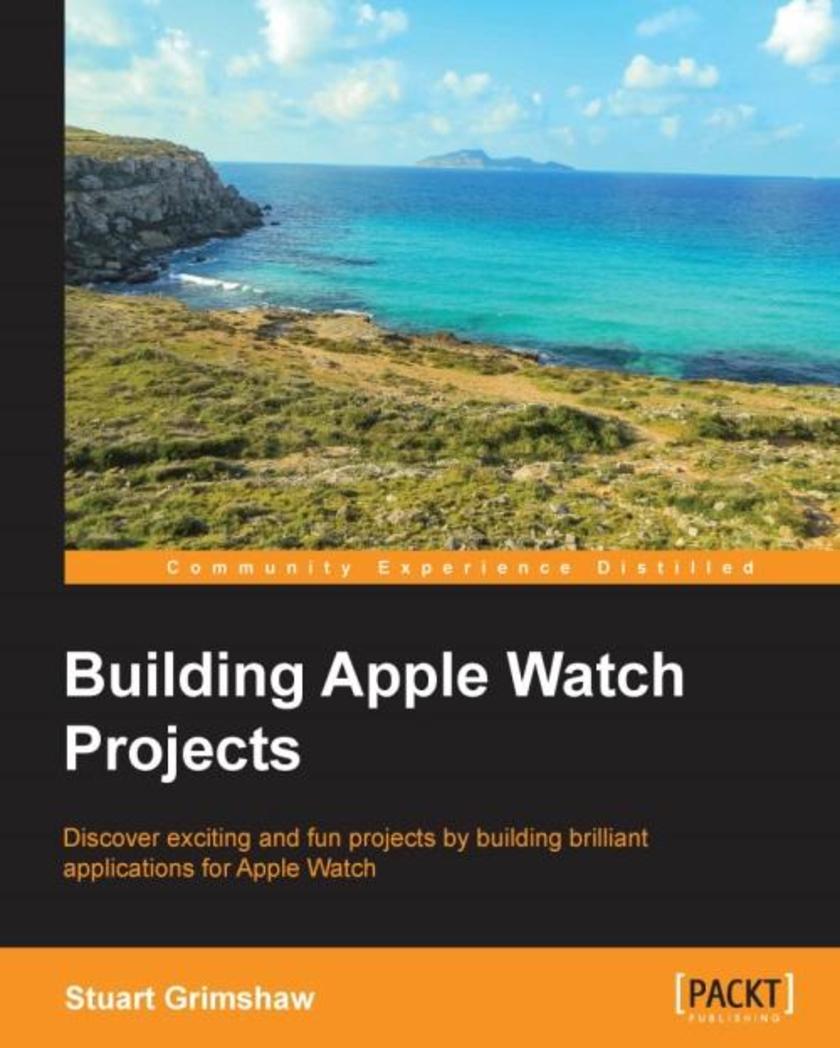
Building Apple Watch Projects
¥80.65
Discover exciting and fun projects by building brilliant applications for the Apple WatchAbout This BookExplore the opportunities opened up to developers by Apple’s latest device: the Apple WatchBe a crackerjack at developing software across a broad range of watch app categoriesFrom an eminent author, master all stages of development, from the first stage through to a completed projectWho This Book Is ForIf you have some basic knowledge of programming in Swift and are looking for the best way to get started with Apple Watch development, this book is just the right one for you!What You Will LearnUnderstand the concept of the Apple Watch as an autonomous device as well as it being paired with the iPhoneGet your app up and runningDesign exciting, inspiring, and attractive layouts for your appsMake your user interface more engaging using images and animationEnable your Watch and iPhone apps to transport and share dataLeverage the feature-rich set of WatchKit technologies provided by AppleConnect your apps to the InternetSubmit your app to the App StoreIn DetailWith Apple’s eagerly anticipated entry into the wearable arena, the field is wide open for a new era of app development. The Apple Watch is one of the most important technologies of our time.This easy-to-understand book takes beginners on a delightful journey of discovering the features available to the developer, right up to the completion of medium-level projects ready for App Store submission. It provides the fastest way to develop real-world apps for the Apple Watch by teaching you the concepts of Watch UI, visual haptic and audio, message and data exchange between watch and phone, Web communication, and finally Visual, haptic as well as audio feedback for users.By the end of this book, you will have developed at least four fully functioning apps for deployment on watchOS 2.Style and approachThis is a step-by-step guide to developing apps for the Apple Watch with the help of screenshots and fully coded working examples.
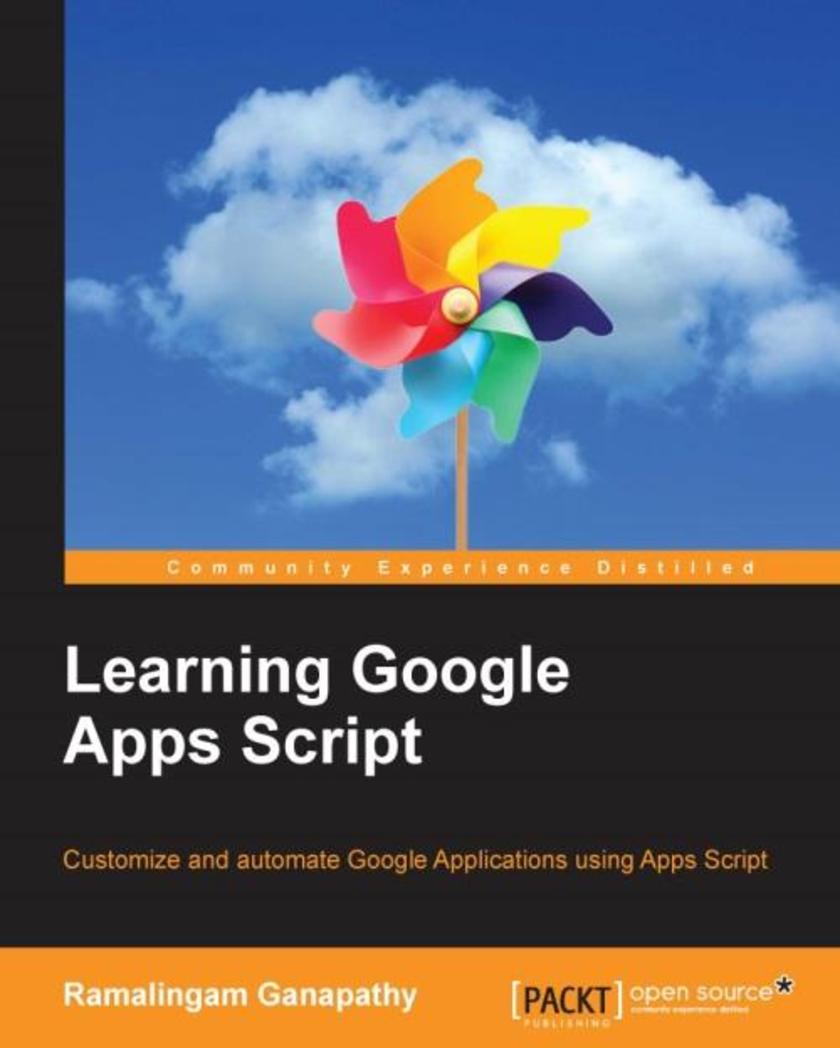
Learning Google Apps Script
¥71.93
Customize and automate Google Applications using Apps Script About This Book Gain insight into customizing and automating Google applications with JavaScript Create add-ons for Google Sheets, Docs, or Forms; automate your workflow; integrate with external APIs; and more. A step-by-step guide to building real-world solutions Who This Book Is For Newbies to google apps * but having practical experience in Java*. What You Will Learn Learn about the Google Apps * platform and work with *s to develop Google apps Create custom menus and dialogs Parse and send emails Generate Google calendar events Build Translator and RSS reader applications Develop interactive web pages Design interactive web-forms Form a workflow application In Detail Google Apps Script is a cloud-based *ing language based on JavaScript to customize and automate Google applications. Apps Script makes it easy to create and publish add-ons in an online store for Google Sheets, Docs, and Forms. It serves as one single platform to build, code, and ultimately share your App on the Web store. This book begins by covering the basics of the Google application platform and goes on to empower you to automate most of the Google applications. You will learn the concepts of creating a menu, sending mails, building interactive web pages, and implementing all these techniques to develop an interactive Web page as a form to submit sheets You will be guided through all these tasks with plenty of screenshots and code snippets that will ensure your success in customizing and automating various Google applications This guide is an invaluable tutorial for beginners who intend to develop the skills to automate and customize Google applications Style and approach An easy-to-follow yet comprehensive guide, filled with many code examples and screenshots illustrating various Google Apps *s.
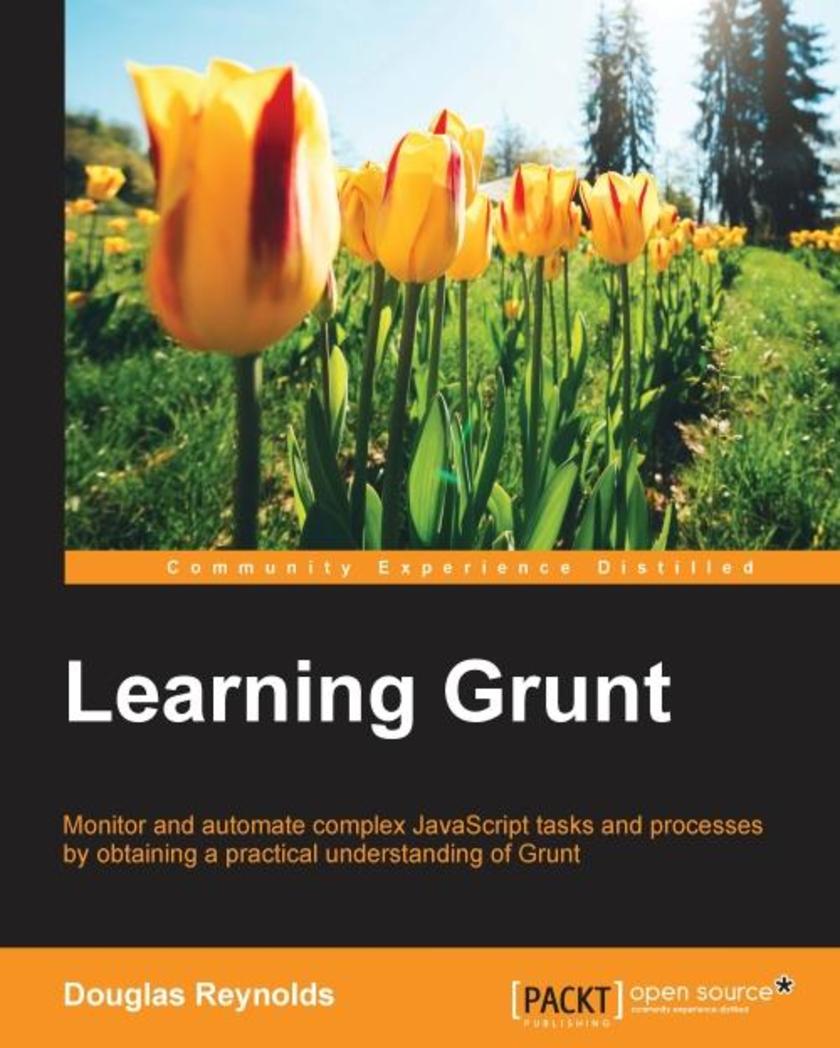
Learning Grunt
¥54.49
Monitor and automate complex JavaScript tasks and processes by obtaining a practical understanding of Grunt About This Book Gain a solid knowledge of Grunt to achieve better process management by improving consistency, productivity, reliability, and quality of code Install, configure, and use plugins into your project with this hands-on guide This step-by-step tutorial will walk you through practical examples of workflow automation Who This Book Is For If you are a JavaScript developer and want to learn project monitoring and automation using Grunt, then this book is for you. Basic knowledge of Node.js and Angular.js is assumed. However, no previous experience using Grunt.js is required. What You Will Learn Install and configure Grunt and its dependencies such as Node.js and Node Package Manager (NPM) Create a sample application using Angular.JS Configure plugins to perform various tasks that will benefit your project Explore the task-specific methods available through the Grunt API such as configuration, externals, events, and logging Set up tasks to automate the build process of the simple contact application Build, test, and refine a sample project Get general tips, tricks, and troubleshooting strategies to identify and solve common issues in Grunt Advance your knowledge of Grunt with concepts such as configuration variables and test automation In Detail With the increasing focus on task automation, the Grunt task runner is a vast platform that allows you to incorporate automation into your workflows. At the outset, you will learn how to use Node.js and NMP through an example. You will then find out how to build a sample app and the development environment for it. You will further delve into the implementation of Grunt plugins and the configuration of Grunt tasks. Furthermore, you will explore the various methods and packages for workflow automation. The final chapter will cover some advanced concepts, such as configuration variables and how to create a Grunt plugin. By the end of the book, you will have gained the fundamentals of Grunt and progressed through advanced concepts, including building a Grunt plugin. Style and approach This book is an easy-to-follow, step-by-step tutorial that provides explanations and examples of deploying Grunt from scratch.

Creating Dynamic UIs with Android Fragments - Second Edition
¥54.49
Create engaging apps with fragments to provide a rich user interface that dynamically adapts to the individual characteristics of your customers’ tablets and smartphones About This Book From an eminent author comes a book that will help you create engaging apps that dynamically adapt to individual device characteristics The only book that includes the latest fragment-oriented features and their role in Material design This book provides code-intensive discussions and detailed examples that help you understand better and learn faster. Who This Book Is For This book is for developers with a basic understanding of Android programming who would like to improve the appearance and usability of their applications by creating a more interactive user experience and dynamically adaptive UIs; providing better support for tablets and smartphones in a single app; and reducing the complexity of managing app UIs. What You Will Learn Learn the role and capabilities of fragments Use Android Studio's fragment-oriented features Create an app UI that works effectively on smartphones and tablets Manage the creation and life cycle of fragments Dynamically manage fragments using the FragmentTransaction class Learn the application design for communicating between fragments Leverage fragments when implementing applications that take advantage of the latest features of Material Design In Detail Today’s users expect mobile apps to be dynamic and highly interactive, with rich navigation features. These same apps must look fantastic whether running on a medium-resolution smartphone or high-resolution tablet. Fragments provide the toolset we need to meet these user expectations by enabling us to build our applications out of adaptable components that take advantage of the rich capabilities of each individual device and automatically adapt to their differences. This book looks at the impact fragments have on Android UI design and their role in both simplifying many common UI challenges and in providing best practices for incorporating rich UI behaviors. We look closely at the roll of fragment transactions and how to work with the Android back stack. Leveraging this understanding, we explore several specialized fragment-related classes such as ListFragment and DialogFragment. We then go on to discuss how to implement rich navigation features such as swipe-based screen browsing, and the role of fragments when developing applications that take advantage of the latest aspects of Material Design. You will learn everything you need to provide dynamic, multi-screen UIs within a single activity, and the rich UI features demanded by today’s mobile users. Style and approach A fast-paced learning guide that gives a hands-on, code-intensive approach with a focus on real-world applications.
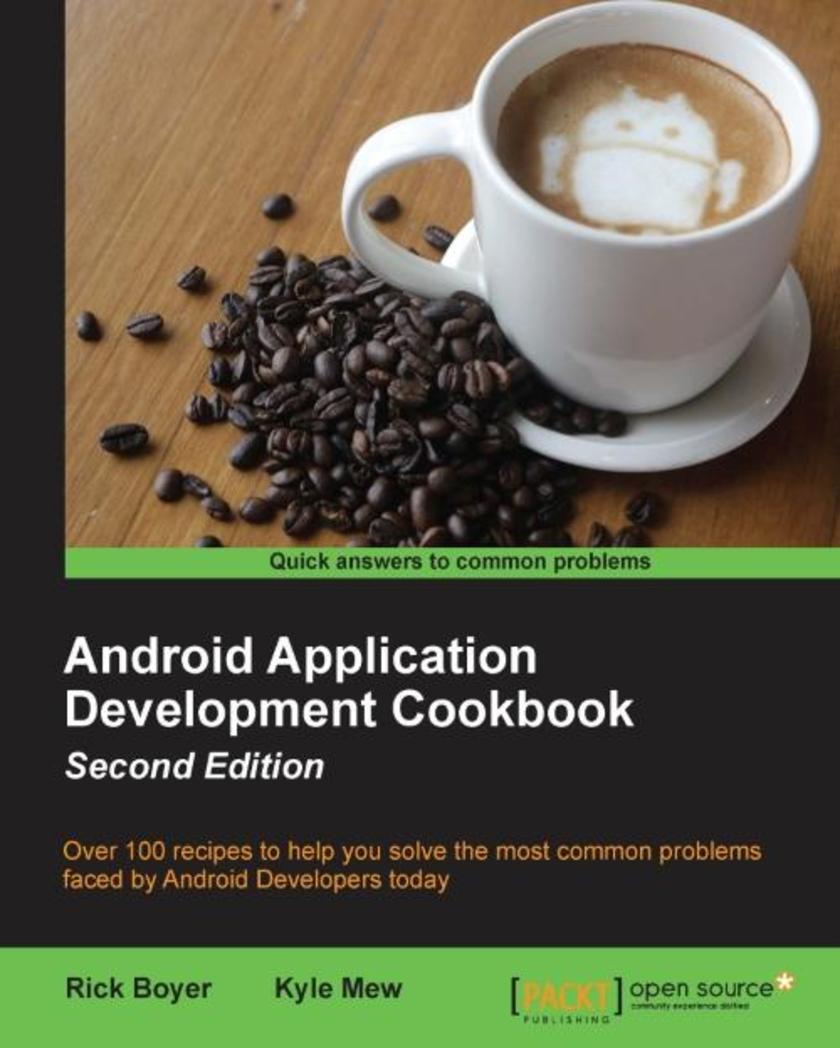
Android Application Development Cookbook - Second Edition
¥80.65
Over 100 recipes to help you solve the most common problems faced by Android Developers today About This Book Find the answers to your common Android programming problems, from set up to security, to help you deliver better applications, faster Uncover the latest features of Android Marshmallow to make your applications stand out Get up to speed with Android Studio 1.4 - the first Android Studio based on the IntelliJ IDE from JetBrains Who This Book Is For If you are new to Android development and want to take a hands-on approach to learning the framework, or if you are an experienced developer in need of clear working code to solve the many challenges in Android development, you can benefit from this book. Either way, this is a resource you’ll want to keep at your desk for a quick reference to solve new problems as you tackle more challenging projects. What You Will Learn Along with Marshmallow, get hands-on working with Google’s new Android Studio IDE Develop applications using the latest Android framework while maintaining backward-compatibility with the support library Master Android programming best practices from the recipes Create exciting and engaging applications using knowledge gained from recipes on graphics, animations, and multimedia Work through succinct steps on specifics that will help you complete your project faster Keep your app responsive (and prevent ANRs) with examples on the AsynchTask class Utilize Google Speech Recognition APIs for your app. Make use of Google Cloud Messaging (GCM) to create Push Notifications for your users Get a better understanding of the Android framework through detailed explanations In Detail The Android OS has the largest installation base of any operating system in the world; there has never been a better time to learn Android development to write your own applications, or to make your own contributions to the open source community! This “cookbook” will make it easy for you to jump to a topic of interest and get what you need to implement the feature in your own application. If you are new to Android and learn best by “doing,” then this book will provide many topics of interest. Starting with the basics of Android development, we move on to more advanced concepts, and we’ll guide you through common tasks developers struggle to solve. The first few chapters cover the basics including Activities, Layouts, Widgets, and the Menu. From there, we cover fragments and data storage (including SQLite), device sensors, the camera, and GPS. Then we move on more advanced topics such as graphics and animation (including OpenGL), multi-threading with AsyncTask, and Internet functionality with Volley. We’ll also demonstrate Google Maps and Google Cloud Messaging (also known as Push Notifications) using the Google API Library. Finally, we’ll take a look at several online services designed especially for Android development. Take your application big-time with full Internet web services without having to become a server admin by leveraging the power of Backend as a Service (BaaS) providers. Style and approach This book progresses from the fundamentals of Android Development to more advanced concepts, with recipes to solve the most common problems faced by developers. This cookbook makes it easy to jump to specific topics of interest, where you’ll find simple steps to implement the solution and get a clear explanation of how it works.
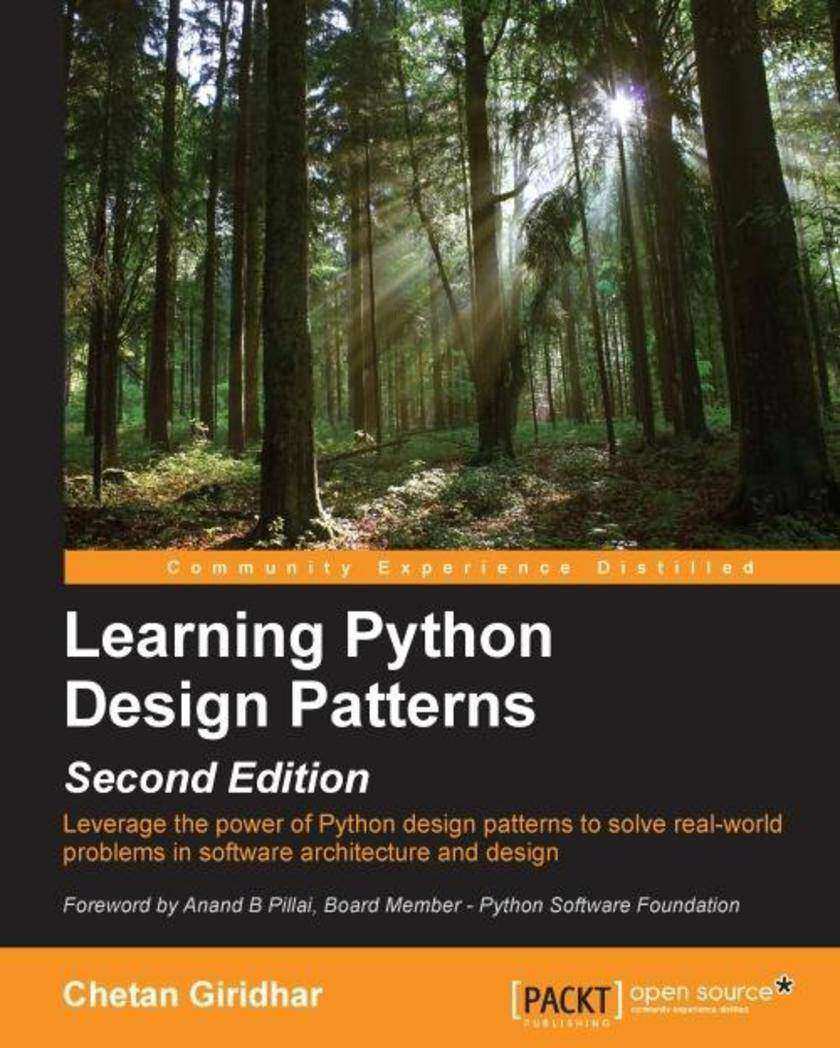
Learning Python Design Patterns - Second Edition
¥71.93
Leverage the power of Python design patterns to solve real-world problems in software architecture and designAbout This BookUnderstand the structural, creational, and behavioral Python design patternsGet to know the context and application of design patterns to solve real-world problems in software architecture, design, and application developmentGet practical exposure through sample implementations in Python v3.5 for the design patterns featuredWho This Book Is ForThis book is for Software architects and Python application developers who are passionate about software design. It will be very useful to engineers with beginner level proficiency in Python and who love to work with Python 3.5What You Will LearnEnhance your skills to create better software architectureUnderstand proven solutions to commonly occurring design issuesExplore the design principles that form the basis of software design, such as loose coupling, the Hollywood principle and the Open Close principle among othersDelve into the object-oriented programming concepts and find out how they are used in software applicationsDevelop an understanding of Creational Design Patterns and the different object creation methods that help you solve issues in software developmentUse Structural Design Patterns and find out how objects and classes interact to build larger applicationsFocus on the interaction between objects with the command and observer patternsImprove the productivity and code base of your application using Python design patternsIn DetailWith the increasing focus on optimized software architecture and design it is important that software architects think about optimizations in object creation, code structure, and interaction between objects at the architecture or design level. This makes sure that the cost of software maintenance is low and code can be easily reused or is adaptable to change. The key to this is reusability and low maintenance in design patterns.Building on the success of the previous edition, Learning Python Design Patterns, Second Edition will help you implement real-world scenarios with Python’s latest release, Python v3.5.We start by introducing design patterns from the Python perspective. As you progress through the book, you will learn about Singleton patterns, Factory patterns, and Fa?ade patterns in detail. After this, we’ll look at how to control object access with proxy patterns. It also covers observer patterns, command patterns, and compound patterns.By the end of the book, you will have enhanced your professional abilities in software architecture, design, and development.Style and approachThis is an easy-to-follow guide to design patterns with hands-on examples of real-world scenarios and their implementation in Python v3.5. Each topic is explained and placed in context, and for the more inquisitive, there are more details on the concepts used.
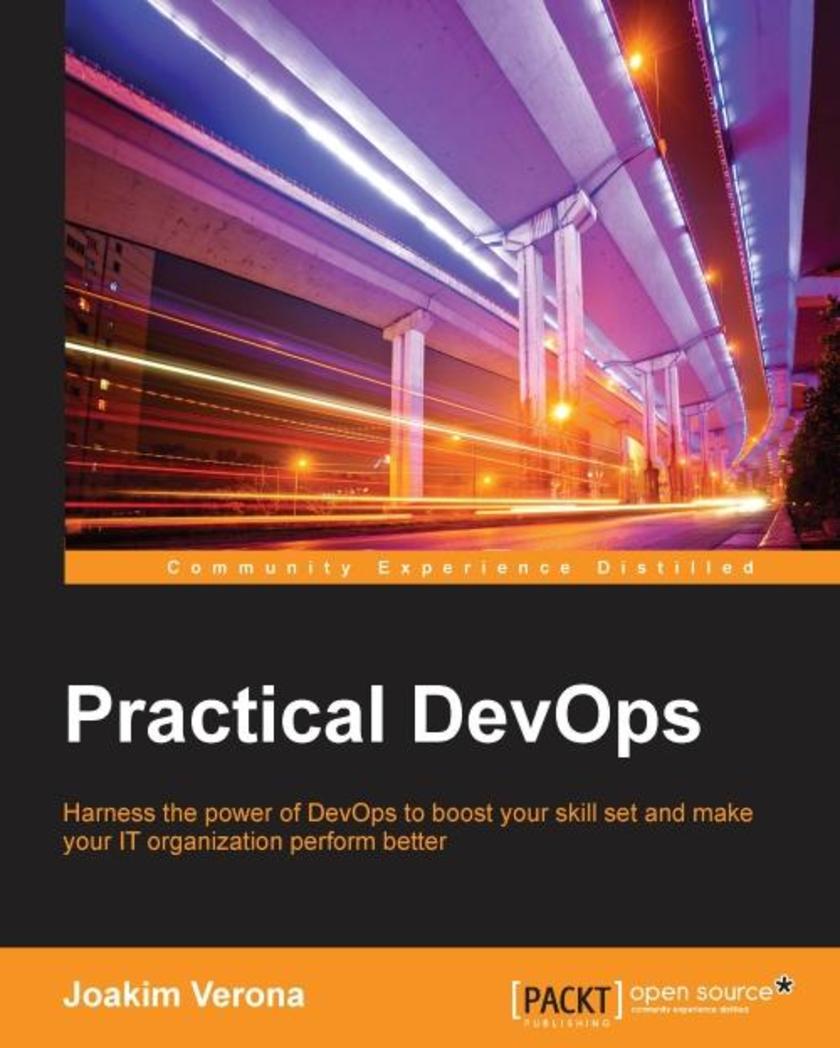
Practical DevOps
¥80.65
Harness the power of DevOps to boost your skill set and make your IT organization perform betterAbout This BookGet to know the background of DevOps so you understand the collaboration between different aspects of an IT organization and a software developerImprove your organization's performance to ensure smooth production of software and servicesDeploy top-quality software and ensure software maintenance and release management with this practical guideWho This Book Is ForThis book is aimed at developers and system administrators who wish to take on larger responsibilities and understand how the infrastructure that builds today's enterprises works. This book is also great for operations personnel who would like to better support developers. You do not need to have any previous knowledge of DevOps.What You Will LearnAppreciate the merits of DevOps and continuous delivery and see how DevOps supports the agile processUnderstand how all the systems fit together to form a larger wholeSet up and familiarize yourself with all the tools you need to be efficient with DevOpsDesign an application that is suitable for continuous deployment systems with Devops in mindStore and manage your code effectively using different options such as Git, Gerrit, and GitlabConfigure a job to build a sample CRUD applicationTest the code using automated regression testing with Jenkins SeleniumDeploy your code using tools such as Puppet, Ansible, Palletops, Chef, and VagrantMonitor the health of your code with Nagios, Munin, and GraphiteExplore the workings of Trac—a tool used for issue trackingIn DetailDevOps is a practical field that focuses on delivering business value as efficiently as possible. DevOps encompasses all the flows from code through testing environments to production environments. It stresses the cooperation between different roles, and how they can work together more closely, as the roots of the word imply—Development and Operations.After a quick refresher to DevOps and continuous delivery, we quickly move on to looking at how DevOps affects architecture. You'll create a sample enterprise Java application that you’ll continue to work with through the remaining chapters. Following this, we explore various code storage and build server options. You will then learn how to perform code testing with a few tools and deploy your test successfully. Next, you will learn how to monitor code for any anomalies and make sure it’s running properly. Finally, you will discover how to handle logs and keep track of the issues that affect processesStyle and approachThis book is primarily a technical guide to DevOps with practical examples suitable for people who like to learn by implementing concrete working code. It starts out with background information and gradually delves deeper into technical subjects.

Bitcoin Essentials
¥54.49
Gain insights into Bitcoin, a cryptocurrency and a powerful technology, to optimize your Bitcoin mining techniquesAbout This BookLearn how to use the advanced features of Bitcoin walletsSet up your Bitcoin mining operations to mine with efficiencyExplore what the future holds for mining and blockchains in this pragmatic guideWho This Book Is ForIf you have never mined before, this book will ensure that you know what mining is all about. If you are familiar with Bitcoin mining, then it will help you to optimize your mining operations at a deeper level. A basic understanding of computers and operating systems is assumed, and some familiarity with cryptocurrency basics would be an added advantage.What You Will LearnGet introduced to Bitcoin mining from the ground upFind out about mining software and the different types of mining hardwareMaster setup techniques to enable efficient miningExamine the pros and cons of the different types of mining hardwareDeduce the differences between solo and pool miningTake a peek into professional mining farmsExplore the future of mining and blockchain-based applicationsIn DetailBlockchain is being billed as the technology of the future. Bitcoin is the first application of that technology. Mining is what makes it all possible. Exploring mining from a practical perspective will help you make informed decisions about your mining setup. Understanding what the future may hold for blockchains, and therefore for mining, will help you position yourself to take advantage of the impending changes.This practical guide starts with an introduction to Bitcoin wallets, as well as mining hardware and software. You will move on to learn about different mining techniques using the CPU, GPU, FPGA, and ultimately the ASIC as an example. After this, you will gain an insight into solo mining and pool mining, and see the differences between the two. The book will then walk you through large-scale mining and the challenges faced during such operations. Finally, you will take a look into the future to see a world where blockchain-based applications are commonplace and mining is ubiquitous.Style and approachThis is a practical guide that includes detailed step-by-step instructions and examples on each essential concept of Bitcoin mining.
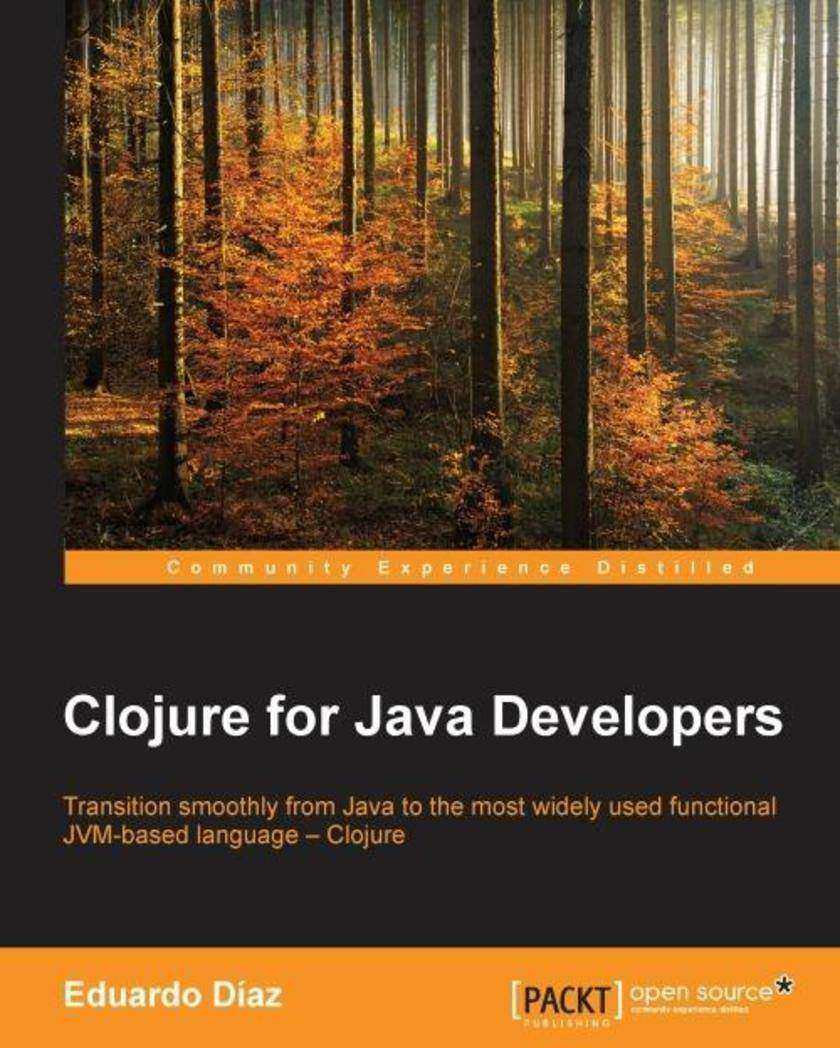
Clojure for Java Developers
¥63.21
Transition smoothly from Java to the most widely used functional JVM-based language – ClojureAbout This BookWrite apps for the multithreaded world with Clojure’s flavor of functional programmingDiscover Clojure’s features and advantages and use them in your existing projectsThe book is designed so that you’ll be able put to use your existing skills and software knowledge to become a more effective Clojure developerWho This Book Is ForThis book is intended for Java developers, who are looking for a way to expand their skills and understand new paradigms of programming. Whether you know a little bit about functional languages, or you are just getting started, this book will get you up and running with how to use your existing skills in Clojure and functional programming.What You Will LearnUnderstand the tools for the Clojure world and how they relate to Java tools and standards (like Maven)Learn about immutable data structures, and what makes them feasible for everyday programmingWrite simple multi-core programs using Clojure’s core concepts, like atoms, agents and refsUnderstand that in Clojure, code is data, and how to take advantage of that fact by generating and manipulating code with macrosLearn how Clojure interacts with Java, how the class loaders work and how to use Clojure from Java or the other way aroundDiscover a new, more flexible meaning of polymorphism and understand that OOP is not the only way to get itIn DetailWe have reached a point where machines are not getting much faster, software projects need to be delivered quickly, and high quality in software is more demanding as ever.We need to explore new ways of writing software that helps achieve those goals. Clojure offers a new possibility of writing high quality, multi-core software faster than ever, without having to leave your current platform.Clojure for Java developers aims at unleashing the true potential of the Clojure language to use it in your projects. The book begins with the installation and setup of the Clojure environment before moving on to explore the language in-depth. Get acquainted with its various features such as functional programming, concurrency, etc. with the help of example projects. Additionally, you will also, learn how the tooling works, and how it interacts with the Java environment.By the end of this book, you will have a firm grip on Clojure and its features, and use them effectively to write more robust programs.Style and approachAn easy to follow, step-by-step, guide on how to start writing Clojure programs making use of all of its varied features and advantages. As this is a new language, certain new concepts are supported with theoretical section followed by simple projects to help you gain a better understanding and practice of how Clojure works.
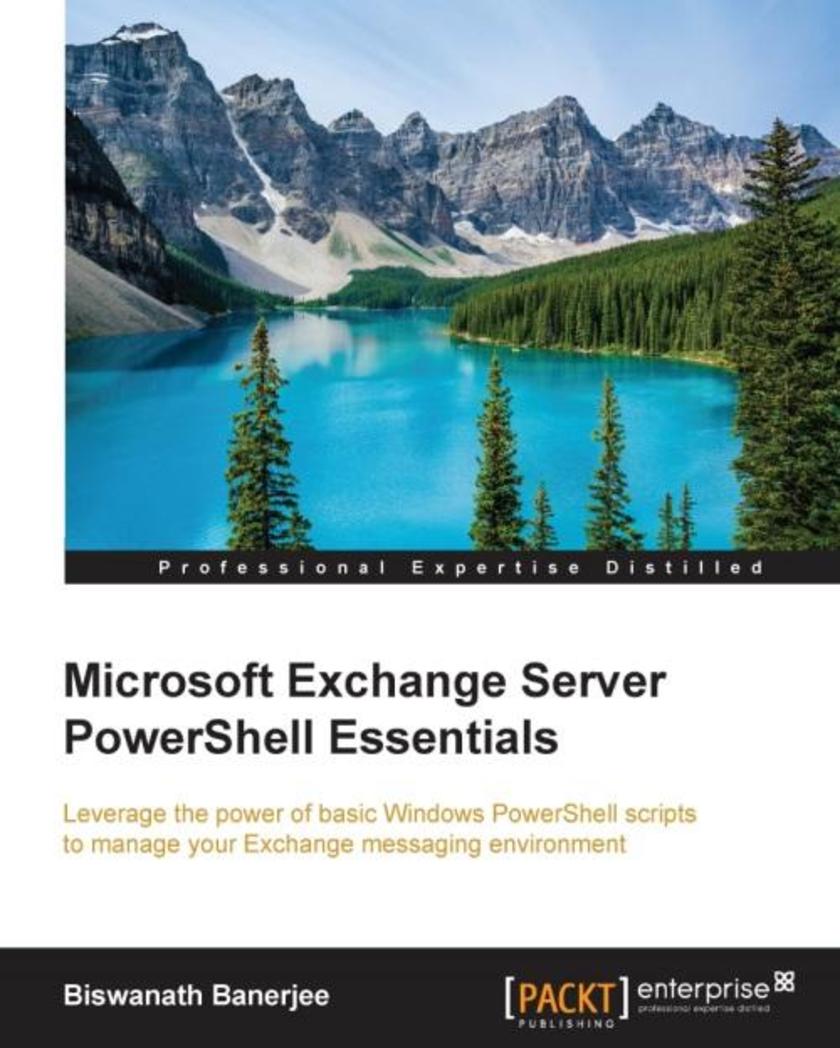
Microsoft Exchange Server PowerShell Essentials
¥63.21
Leverage the power of basic Windows PowerShell *s to manage your Exchange messaging environmentAbout This BookGet to grips with Windows PowerShell and how it can be used to manage various aspects of the operating system and applicationsBecome proficient in PowerShell and apply it to manage Exchange infrastructure on-premise or via Exchange Online as part of Office 365Learn to create Windows PowerShell *s to do administrative tasks with this step-by-step, easy-to-follow guideWho This Book Is ForThis book is for administrators with a basic or limited understanding of Windows PowerShell and who want to increase their skill set in managing both the Exchange On Premise and Online environments.What You Will LearnDeep dive into the Windows PowerShell basicsCreate and manage Recipients and permissionsManage Distribution Group members, permissions, and group typesUnderstand Certificates and Role-Based Access Control using real-world examplesReview the usage of email address, address book, and retention policies with examplesLearn to manage Exchange Client Access and Mailbox Server rolesUse PowerShell for auditing and risk management in your Exchange organizationManage a highly available Exchange environment using PowerShellInteract with Exchange through the use of the Exchange Web Services-managed APIIn DetailPowerShell has become one of the most important skills in an Exchange administrator's armory. PowerShell has proved its mettle so widely that, if you're not already starting to learn PowerShell, then you're falling behind the industry. It isn't difficult to learn PowerShell at all. In fact, if you've ever run commands from a CMD prompt, then you'll be able to start using PowerShell straightaway.This book will walk you through the essentials of PowerShell in Microsoft Exchange Server and make sure you understand its nitty gritty effectively.You will first walk through the core concepts of PowerShell and their applications. This book discusses ways to automate tasks and activities that are performed by Exchange administrators and that otherwise take a lot of manual effort.Microsoft Exchange PowerShell Essentials will provide all the required details for Active Directory, System, and Exchange administrators to help them understand Windows PowerShell and build the required *s to manage the Exchange Infrastructure.Style and approachThis book is written with its target audience in mind; concepts are explained and followed by real-life examples. A comprehensive * is provided in each chapter to give you hands-on practice with all the major commands used in it.

Apple Pay Essentials
¥54.49
Harness the power of Apple Pay in your iOS apps and integrate it with global payment gatewaysAbout This BookBe it adding an Apple Pay button to your app or calculating sales tax with Apple Pay- this book gives you all the information you need to build a fully-functional Apply Pay applicationPaying within iOS Apps made easier and secure with this no nonsense and powerful guideEscape tedious payment options by creating compelling product card screens that present the Pay button, which your customers can tap to quickly order your productsWho This Book Is ForThis book is for anyone who wants to integrate Apple Pay in their applications. Basic familiarity with programming and the Xcode developer tools is expected.What You Will LearnDesign a product card that includes the Apple Pay buttonImplement the Apple Pay workflow in an efficient wayUse NSDecimalNumber objects to perform financial calculations accuratelyManage custom order information in the Apple Pay workflow and your custom order management systemExtract payment information from a payment tokenImplement a secure, server-side payment-processor programFind out everything you wanted to know about Apple Pay in iOS 9In DetailApple Pay, one of the most talked about offerings of the latest iOS 9 release, is a digital wallet and electronic payment system developed by Apple Inc. Paying in stores or within apps has never been easier or safer. Gone are the days of searching for your wallet, and the wasted moments finding the right card! Now you can use your credit cards and rewards cards with just a touch.It allows payment to merchants, using Near field Communication (NFC), and within iOS apps. Implementing Apple Pay within apps for payment is a bit tricky, but our book solves this problem for you.Whether you are a brand new iOS app developer or a seasoned expert, this book arms you with necessary skills to successfully implement Apple Pay in your online-payment workflow.Whether you are a brand new iOS app developer or a seasoned expert, this book arms you with the necessary skills to successfully implement Apple Pay. We start off by teaching you how to obtain the certificates necessary to encrypt customers’ payment information. We will use Xcode and Objective C for the interface and Node.js for server side code. You will then learn how to determine whether the customer can use Apple Pay, and how to create payment requests. You will come to grips with designing a payment-processor program to interact with the payment gateway. Finally, we take a look at a business-focused view of Apple Pay protocols and classes.By the end of this book, you will be able to build a fully functional Apple Pay-integrated iOS appStyle and approachThis is an easy-to-follow guide on integrating Apple Pay in your iOS Application. With step by step instructions along with excellent screen shots you will be able to learn everything that you wanted to know about Passbook and Apple Pay in iOS 8.
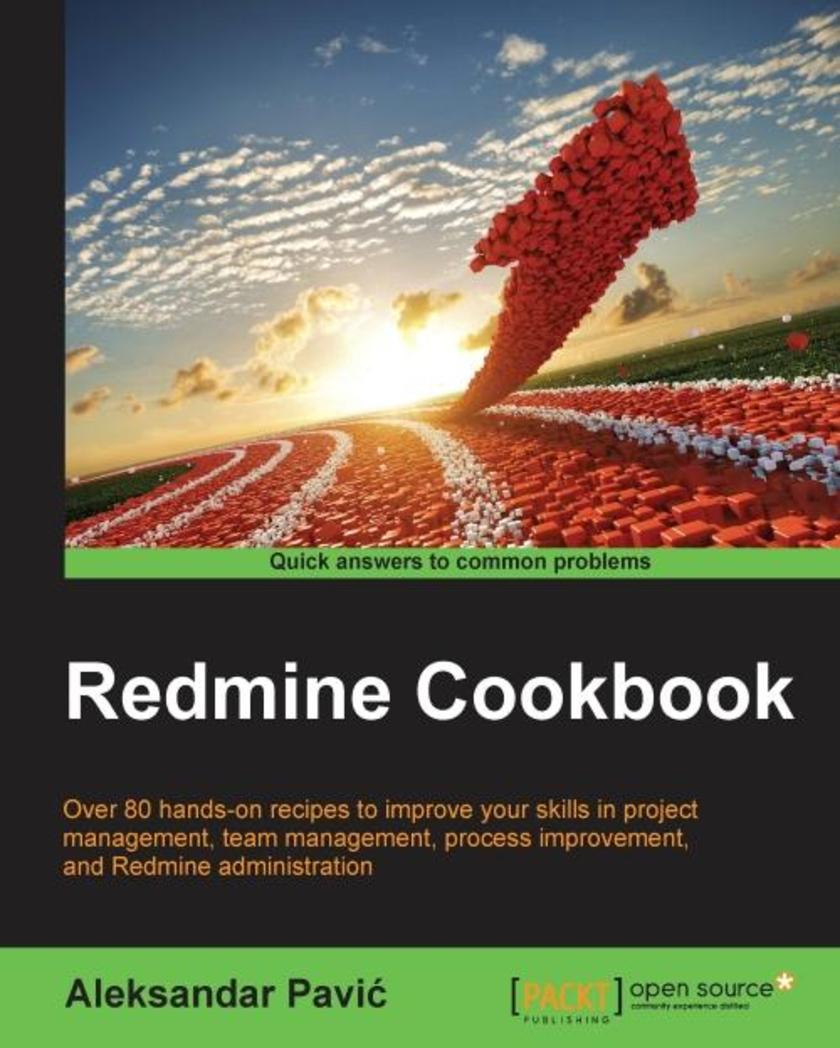
Redmine Cookbook
¥80.65
Over 80 hands-on recipes to improve your skills in project management, team management, process improvement, and Redmine administrationAbout This BookEfficiently install and customize Redmine for your own infrastructure, whether that be Microsoft or open sourceManage multiple projects with multiple teams across the globe in a standardized and effective wayCustomize Redmine to fit your organisation's specific and unique needsWho This Book Is ForThis book is for those who working in management or administrator positions who are already using Redmine or are willing to start using it for project management, tracking, collaboration, or process management. Additionally, individual developers or teams can benefit from recipes related to code repositories, bug tracking, and software project management.What You Will LearnMake Redmine run on Microsoft SQL Server with IISEnjoy the benefits of updating the code on a real-time basis and maintaining consistencyManage multiple projects and teams simultaneouslyLeverage Redmine features to enhance team's performanceUse Redmine for SCRUM and Agile methodologiesDeploy Redmine for Service DeskCustomize the user experience by manually tracking the ongoing projectsExtend Redmine through various pluginsIn DetailIn a variety of online project management tools, Redmine markets itself as offering flexibility. Choosing the right management tool can mean the difference between the success and failure of a project. Flexible project management tools bend themselves to fit your needs, whether that’s communication regarding a simple project, or collaboration, or more complex project methodology such as SCRUM, or an issue-code relationship, or the need of different methodology for your project.Whether you are project manager or system administrator, this book provides valuable recipes to get the best possible performance out of your team, organization, infrastructure, and Redmine itself. Through a series of carefully crafted recipes covering the nitty-gritty of Redmine, you’ll be guided through the installation of Redmine, as well as how to fine-tune and customize your Redmine installation. Finally, we walk you through integrating Redmine with other softwares and databases like Tortoise SVN and Visual Studio and troubleshooting Redmine.Style and approachThis book follows a step-by-step recipe-based approach. Detailed prerequisites make each recipe easy to follow and apply in practice in any kind of live environment.
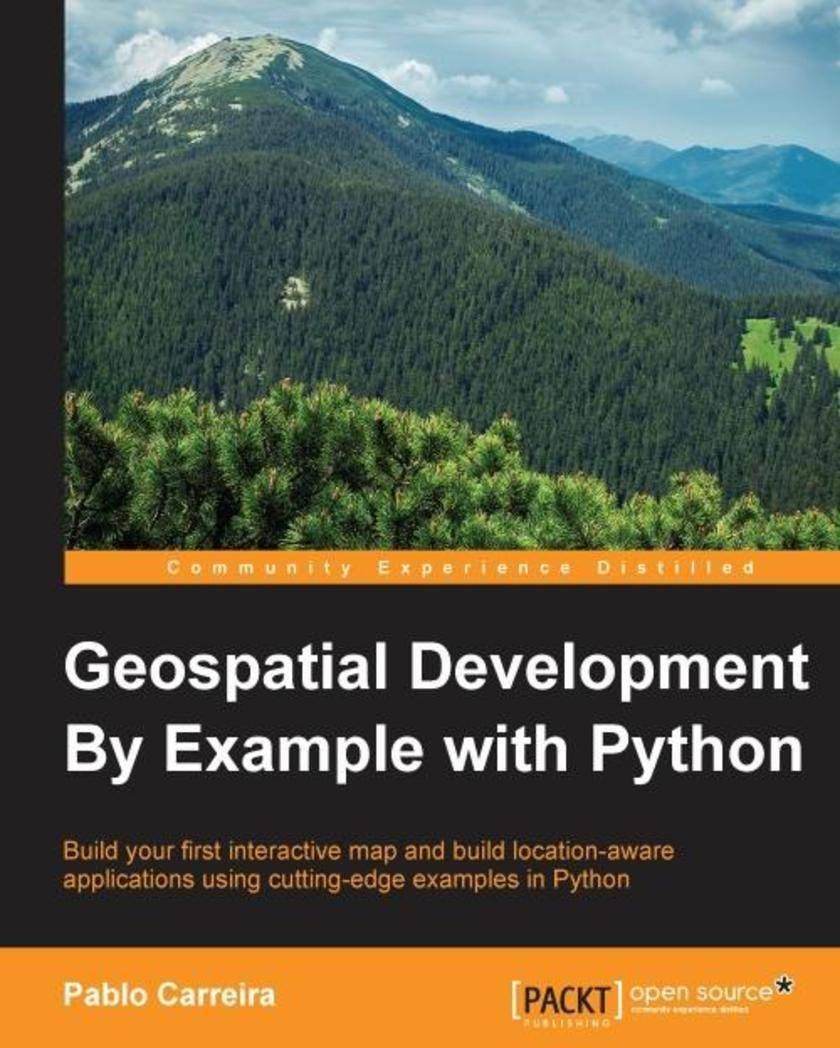
Geospatial Development By Example with Python
¥90.46
Build your first interactive map and build location-aware applications using cutting-edge examples in PythonAbout This BookLearn the full geo-processing workflow using Python with open source packagesCreate press-quality styled maps and data visualization with high-level and reusable codeProcess massive datasets efficiently using parallel processingWho This Book Is ForGeospatial Development By Example with Python is intended for beginners or advanced developers in Python who want to work with geographic data. The book is suitable for professional developers who are new to geospatial development, for hobbyists, or for data scientists who want to move into some simple development.What You Will LearnPrepare a development environment with all the tools needed for geo-processing with PythonImport point data and structure an application using Python’s resourcesCombine point data from multiple sources, creating intuitive and functional representations of geographic objectsFilter data by coordinates or attributes easily using pure PythonMake press-quality and replicable maps from any dataDownload, transform, and use remote sensing data in your mapsMake calculations to extract information from raster data and show the results on beautiful mapsHandle massive amounts of data with advanced processing techniquesProcess huge satellite images in an efficient wayOptimize geo-processing times with parallel processingIn DetailFrom Python programming good practices to the advanced use of analysis packages, this book teaches you how to write applications that will perform complex geoprocessing tasks that can be replicated and reused.Much more than simple *s, you will write functions to import data, create Python classes that represent your features, and learn how to combine and filter them.With pluggable mechanisms, you will learn how to visualize data and the results of analysis in beautiful maps that can be batch-generated and embedded into documents or web pages.Finally, you will learn how to consume and process an enormous amount of data very efficiently by using advanced tools and modern computers’ parallel processing capabilities.Style and approachThis easy-to-follow book is filled with hands-on examples that illustrate the construction of three sample applications of how to write reusable and interconnected Python code for geo-processing.




 购物车
购物车 个人中心
个人中心



